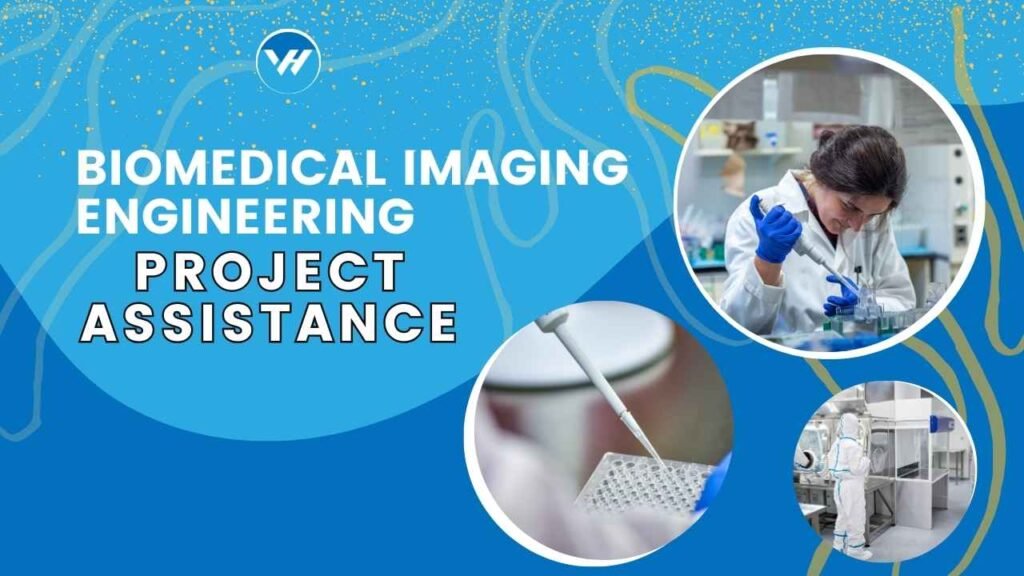Biomedical imaging engineering is a specialized field that combines engineering principles with medical imaging technologies to improve diagnostic accuracy and treatment in healthcare. This field plays a crucial role in developing advanced imaging systems that help clinicians visualize internal structures and monitor disease progression. From MRI scans to PET scans, biomedical imaging engineers are behind the scenes, ensuring these technologies work effectively and efficiently.

Table of Contents
ToggleImportance of Biomedical Imaging in Modern Medicine
Biomedical imaging has revolutionized modern medicine by providing non-invasive methods to observe the inner workings of the human body. These imaging techniques allow for early diagnosis, accurate treatment planning, and effective monitoring of diseases. Without advanced imaging, many medical conditions would remain undetected until they are significantly advanced, leading to less favorable outcomes for patients.
Challenges in Biomedical Imaging Projects
Despite its advancements, biomedical imaging comes with its own set of challenges. Engineers often face issues such as integrating new technologies with existing systems, ensuring high image quality, and managing the enormous amount of data generated. Addressing these challenges requires a deep understanding of both engineering and medical principles.
Understanding Biomedical Imaging Projects
Common Types of Biomedical Imaging Technologies
Biomedical imaging projects often involve several types of imaging technologies, each with its unique applications and advantages:
MRI (Magnetic Resonance Imaging)
MRI uses strong magnetic fields and radio waves to generate detailed images of organs and tissues. It’s particularly useful for imaging soft tissues and detecting abnormalities such as tumors or brain lesions.
CT (Computed Tomography)
CT scans use X-rays to create detailed cross-sectional images of the body. They are commonly used for diagnosing internal injuries, cancers, and other conditions that require a detailed view of bones and organs.
Ultrasound
Ultrasound imaging uses high-frequency sound waves to produce images of internal structures. It’s frequently used in obstetrics to monitor fetal development and in cardiology to examine the heart.
PET (Positron Emission Tomography)
PET scans involve injecting a small amount of radioactive material to detect metabolic activity within tissues. This technology is valuable for diagnosing cancer, assessing brain disorders, and evaluating heart conditions.
Key Components of a Biomedical Imaging Project
A biomedical imaging project typically includes several key components:
- Technology Selection: Choosing the appropriate imaging technology based on the project’s objectives.
- System Design: Developing both hardware and software to support the imaging system.
- Testing and Calibration: Ensuring the system performs accurately and reliably.
- Data Analysis: Interpreting the images and data to provide meaningful results.
Steps to Successfully Complete a Biomedical Imaging Engineering Project
Defining the Project Scope
The first step in any biomedical imaging project is to define the scope. This involves understanding the specific goals of the project, the technologies to be used, and the desired outcomes. Clear objectives help in creating a focused plan and allocate resources effectively.
Conducting Research and Literature Review
Before starting the project, conducting thorough research and a literature review is essential. This helps in understanding the current state of technology, identifying gaps, and gathering relevant information that will guide the project.
Designing the Imaging System
Hardware Design
Designing the hardware involves selecting components such as sensors, detectors, and imaging machines. It’s crucial to ensure compatibility and functionality to achieve high-quality imaging results.
Software Development
Software development includes creating algorithms for image processing, data analysis, and user interfaces. The software must be capable of handling complex calculations and presenting data in an easily interpretable format.
Implementation and Testing
Once the design phase is complete, the next step is implementation. This involves assembling the hardware, coding the software, and integrating both components. Rigorous testing is essential to ensure that the system works as intended and meets all project requirements.
Data Analysis and Interpretation
After the imaging system is operational, data analysis and interpretation are crucial. This involves examining the images produced, identifying any abnormalities, and making informed conclusions based on the findings.
Documentation and Reporting
Proper documentation and reporting are vital for any biomedical imaging project. This includes recording all aspects of the project, from design specifications to testing results. Detailed reports ensure transparency and provide a basis for future projects or improvements.
Tools and Software for Biomedical Imaging
Popular Software Tools
Several software tools are commonly used in biomedical imaging projects:
MATLAB
MATLAB is a high-level programming language and environment used for complex calculations and data visualization. It’s widely used for developing algorithms and processing imaging data.
ImageJ
ImageJ is an open-source image processing software that offers a range of tools for analyzing and manipulating images. It’s particularly useful for biological imaging and research.
3D Slicer
3D Slicer is a free, open-source platform for medical image analysis and visualization. It supports a wide range of imaging modalities and is used for research and clinical applications.
Hardware Requirements
The hardware requirements for biomedical imaging projects depend on the type of imaging technology used. Key components typically include high-resolution sensors, powerful computers for processing data, and specialized imaging equipment.
Common Challenges and Solutions
Data Quality and Accuracy
Ensuring high data quality and accuracy is a major challenge in biomedical imaging. Solutions include regular calibration of equipment, employing advanced image processing algorithms, and conducting thorough validation of results.
Integration with Other Systems
Integrating new imaging systems with existing healthcare IT infrastructure can be challenging. Solutions involve designing interoperable systems, using standardized data formats, and collaborating with IT professionals to ensure seamless integration.
Budget and Time Constraints
Biomedical imaging projects often face budget and time constraints. Effective project management, prioritizing critical tasks, and seeking funding or partnerships can help overcome these challenges.
How Virtual Help Can Assist You
Overview of Virtual Help
Virtual Help is an online platform designed to assist students and professionals with academic and project-related challenges. It offers a range of services including tutoring, assignment help, and project assistance.
Services Offered by Virtual Help
Virtual Help provides tailored assistance for biomedical imaging projects, including expert tutoring, project management support, and access to specialized tools and resources. Their team of professionals can guide you through every step of your project, from initial planning to final execution.
How to Get Started with Virtual Help
Getting started with Virtual Help is simple. Download the Virtual Help app on iOS or Android, create an account, and browse the available services. You can connect with experts, schedule sessions, and get the support you need for your biomedical imaging projects.
Conclusion
Biomedical imaging engineering is a dynamic and challenging field that requires a blend of technical expertise and creativity. Successfully completing a biomedical imaging project involves careful planning, design, implementation, and analysis. With the right tools, strategies, and support from platforms like Virtual Help, you can navigate these challenges effectively and achieve your project goals.
FAQs
What is the typical duration for a biomedical imaging project?
The duration of a biomedical imaging project can vary widely depending on the complexity and scope. On average, projects can take several months to complete, from initial planning to final reporting.
How do I choose the right imaging technology for my project?
Choosing the right imaging technology depends on the specific objectives of your project. Consider factors such as the type of images needed, the level of detail required, and the available budget.
Can Virtual Help assist with project management?
Yes, Virtual Help offers project management support as part of its services. You can get assistance with planning, coordinating, and executing your biomedical imaging projects.
What qualifications should I look for in a biomedical imaging tutor?
When selecting a biomedical imaging tutor, look for qualifications such as relevant academic degrees, professional experience in the field, and a strong understanding of imaging technologies and techniques.
How can I ensure the accuracy of my imaging data?
To ensure the accuracy of your imaging data, regularly calibrate your equipment, use advanced image processing software, and validate your results through rigorous testing and comparison with known standards.





